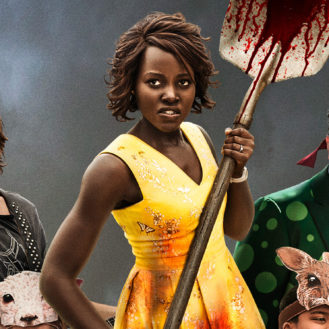Baz Luhrmann’s flashy adaptation of F. Scott Fitzgerald’s 1925 novel The Great Gatsby is a “production” in every sense of the word – as many of us expect it to be. In fact, the film evoked the same reaction I had when I watched Luhrmann’s much loved Oscar winner Moulin Rouge! in 2001.
Judging from these two examples, I find Baz Luhrmann likes to scream and shout during the first thirty minutes or so of his spectacles. It’s pretty to look at but especially alarming because it’s during these initial scenes when key characters and environments are introduced to us.
During this first leg of The Great Gatsby, audiences receive a lot of loud colours, a bombastic array of sounds, jarring and ridiculous modern day musical remixes, and quick cuts galore. The editing gets so speedy that characters aren’t even allowed to finish some single actions before Luhrmann and his editor decide to focus on something else.
Characters are also presented to us in no other way than to focus on the celebrity playing the role. When the mysterious Gatsby makes his way onto the screen, he’s presented in a way that makes it impossible for us not to see him as any other person than Leonardo DiCaprio. The same goes for a tired Nick Carraway, Gatsby’s soon-to-be best bud played by Tobey Maguire.
With all this razzle-dazzle and chaos, Baz Luhrmann is trying to emphasize and focus solely on the extravagance of Gatsby’s eventful parties, the high class, and the confusion and hysteria that occurs when one is settling in to a lifestyle. As Luhrmann has a ball behind the camera and the cast of well dressed attractive actors are consistently active dancing and talking with wide eyes, we sit in the audience questioning if we’ll be able to take the film seriously and be able to believe anything we’re seeing – as I did during the first thirty minutes of Moulin Rouge!.
However, we find ourselves allured and captured by Luhrmann’s style and his theatrics. It completely sucks us in to this tale of romance and tragedy – two familiar territories for the director.
The story about Gatsby’s endless love for Nick’s cousin Daisy (played by Carey Mulligan) and his hard-wired devotion to persuade Daisy to leave her husband Tom (played by Joel Edgerton) is very entertaining as we watch Gatsby’s charisma and imagination act as tracks possibly leading to a messy train wreck.
We forget about which actor is playing who. The performances from Marguire and DiCaprio are enjoyable and the two leads work very well off of one another, making a great team. Mulligan, Edgerton, and other members of this ensemble are just as pleasant.
The Great Gatsby may translate to the screen as a flashy “production” but, as Baz Luhrmann has the ability to do, the film turns into an event – as if we’re watching a really well done and attractive stage play. The 3D may seem as if its there to throw confetti at moviegoers, but it’s also clearly there to add to the interactivity of the film – making us further believe we’re sitting front row centre at a delectable stage play and the actors are within reach.
I do wish Luhrmann finds a more successful way to be spectacular during cinematic introductions while not pushing his audience to squint and flinch. But for now, it’s that chaotic hysteria that leads to a consistently energetic and throughly pleasurable “production”. You win again, Baz.





Leave a comment